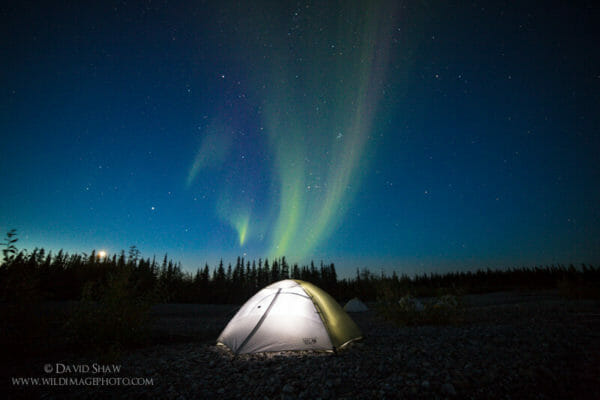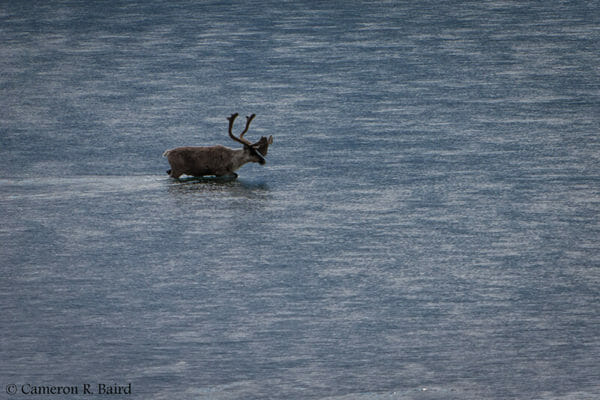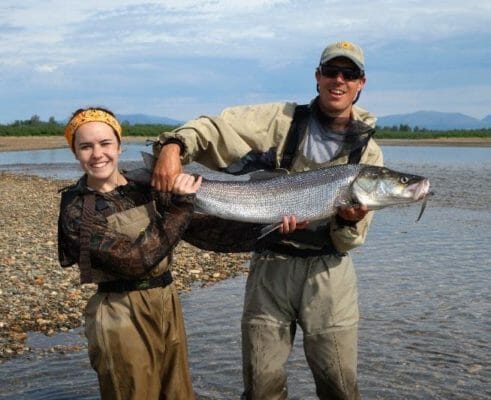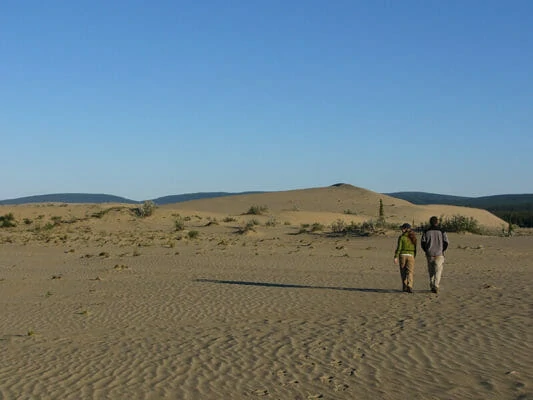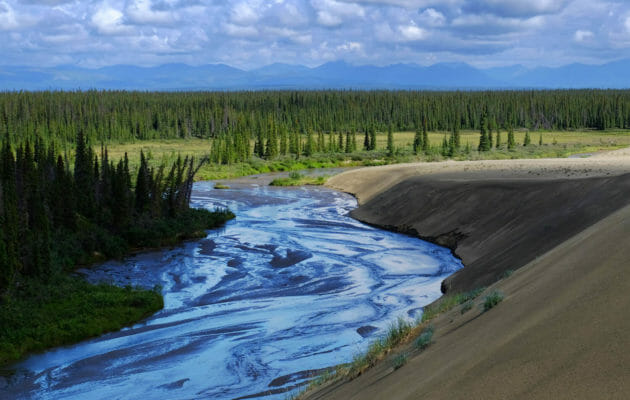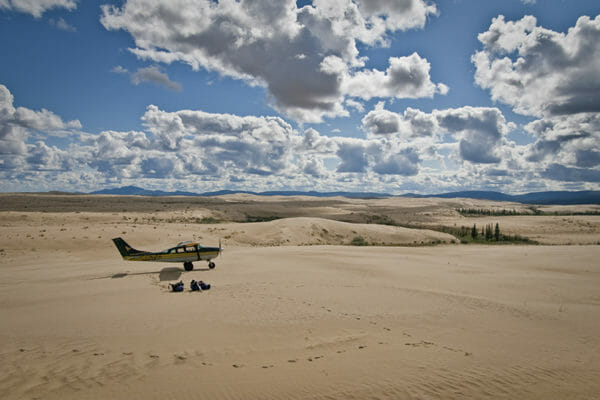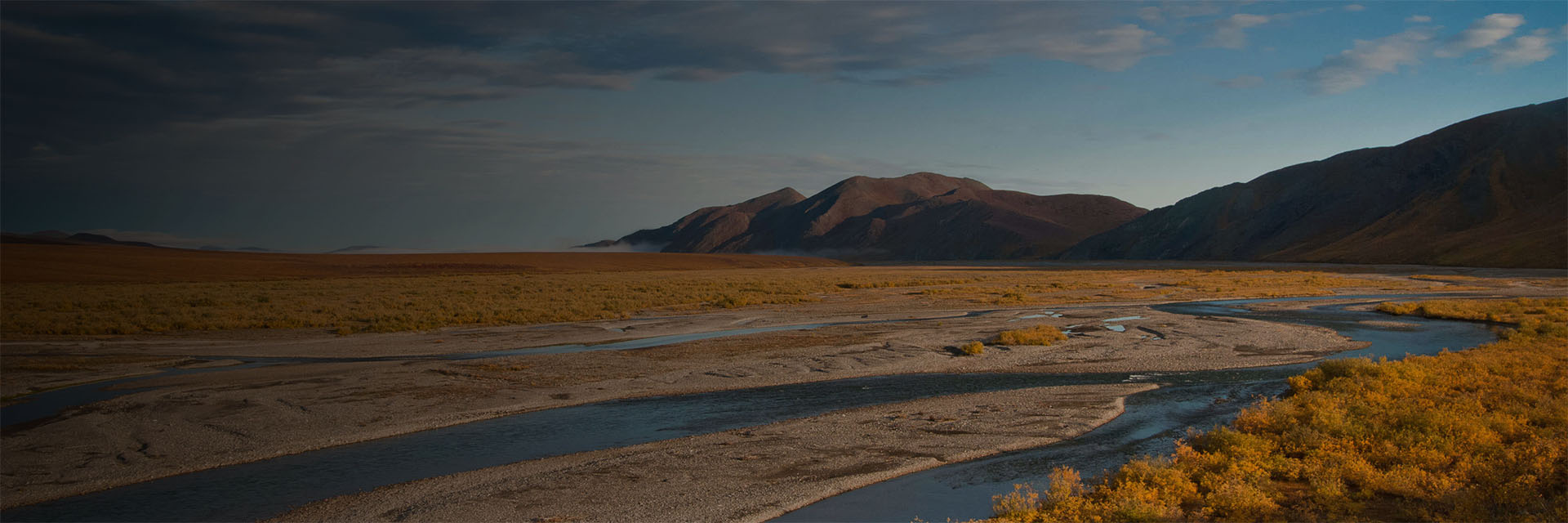Last updated: December 22, 2020
Itinerary
What follows is a general flow of events. Expect the unexpected and prepare to be flexible.
Day 0
Meet your guide in Kotzebue for a pre-trip meeting at 4pm.
Day 1
Fly from Kotzebue to the Kobuk River village of Ambler. Here we will assemble our canoes and push off into the river. Once we are clear of the village and surrounded by the quiet of the endless forest, bright with fall colors, we will set up camp near the river and search the sky for the aurora.
Day 2 - 5
We have 3 days to cover 50 miles which leaves plenty of time for watching animals, wandering the woods, visiting Eskimo fish camps, and casting a line in hopes of eating Sheefish for dinner. We will spend time at Onion Portage pondering the many overlapping cultures who have hunted here and the way the mountains funnel caribou to this unique spot. The paddling is easy on the broad river unless we encounter headwinds, but we will try to paddle when the weather is good and amuse ourselves otherwise if the weather gets tough. Instruction is provided and no paddling experience is required.
Day 6 - 9
We will camp where the river is closest to the Dunes after our 4th day of the trip. In the morning of the 5th day we will stash our canoes and walk inland towards the Great Kobuk Sand Dunes. Once we reach the sand and find a suitable camp near to a drinking water supply, we will begin our exploration in earnest. Caribou, moose, wolves and fox all frequent the dunes as do a great number of birds. The sand constantly shifts and swirls. There are springs coming right out of the sand and great expanses where nothing seems to live. On the afternoon of the 8th day we will load our packs and return to the river for a final night of sky gazing.
Day 10
Weather permitting, our bush plane will arrive to fly us back to “civilization”. We plan to arrive back in Kotzebue by early evening. Take a shower!







